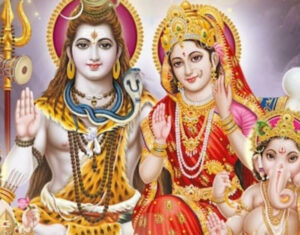
Overview: Teej festival
Teej is a significant festival for Hindu women, primarily celebrated in Nepal and India, with particular focus in the Terai regions. It typically falls in the month of Bhadrapada, which corresponds to August or September in the Gregorian calendar. The festival lasts for three days and is marked by various rituals and cultural events.
When does Teej start?
Teej generally begins with Dwitiya (the second day) of the waxing moon in Bhadrapada, but the main celebrations are held on Teej, the third day of the festival. The dates of Teej vary each year, depending on the lunar calendar, but it usually falls around late August or early September.
Why do women fast during Teej?
Women fast during Teej primarily for the following reasons:
For the well-being of their husbands: Married women observe fasting and prayers for the long life and prosperity of their husbands. In some traditions, unmarried women also fast to pray for a good husband.
To seek blessings from Goddess Parvati: Teej is associated with Goddess Parvati, who is believed to have observed a rigorous fast to win Lord Shiva’s love. Women fast to emulate this devotion and seek blessings for marital happiness, love, and fulfillment.
Spiritual Purification: The fast is also a form of spiritual purification, where women seek inner peace, strength, and blessings for their families and personal lives.
The fast involves abstaining from food and water, though some women consume fruits and light food, depending on regional variations. The fasting is accompanied by singing, dancing, and offering prayers to Goddess Parvati for marital bliss and well-being. Teej is not just about fasting but also a time for women to gather with friends and family, enjoy cultural performances, and celebrate female solidarity.
The Teej festival has deep historical and mythological roots in Hinduism, with its origin primarily linked to the story of Goddess Parvati and her devotion to Lord Shiva. Over the centuries, Teej has evolved into a vibrant cultural celebration, especially for women, across Nepal, India, and parts of South Asia.
Mythological Origins:
The most prominent mythological story behind Teej is centered around Goddess Parvati. According to Hindu mythology:
Goddess Parvati’s Devotion: Parvati, the daughter of the mountain king, longed to marry Lord Shiva, but despite her beauty and devotion, Shiva did not pay attention to her. To win his love and favor, she observed a strict fast and meditated for many years, enduring severe hardships and self-discipline.
Shiva’s Blessing: After many years of fasting and devotion, Lord Shiva was moved by Parvati’s determination and love. Eventually, he accepted her as his wife, and they were united in marriage. This union is symbolically celebrated during Teej, especially by married women who fast for the well-being and long life of their husbands.
Celebration of Marital Bliss: The story represents the themes of devotion, love, patience, and the importance of self-sacrifice. Women across Hindu society observe the fast and prayers in honor of Goddess Parvati’s unwavering love for Lord Shiva, hoping to gain marital bliss and prosperity.
Historical Development:
While the mythological origins of Teej are well-known, the actual celebration of the festival likely developed over time as a way for communities to celebrate marital harmony, fertility, and the power of devotion.
Ancient Traditions: The festival’s rituals and customs can be traced back to ancient Hindu traditions, with Teej believed to have been celebrated since the times of the Vedic period, though specific references to Teej as we know it today are not found in ancient texts. The emphasis on fasting, prayers, and goddess worship has been present in various forms over time.
Cultural Evolution: As the festival spread across different regions, particularly in Nepal and parts of India, the cultural aspects of Teej expanded. Women would come together to celebrate with song, dance, and festive meals, and over the centuries, these communal gatherings became a significant part of the festival.
Women’s Empowerment: Over time, Teej has evolved into a festival that not only honors the devotion of women but also provides them with a space to celebrate female strength, solidarity, and communal joy. It has become a time for women to unite, support one another, and renew their devotion to their families and marriages.
Regional Variations:
Though the mythological origin remains largely consistent, regional variations in the celebration of Teej exist:
In Nepal, Teej is observed with great enthusiasm, particularly among married women who wear traditional red sarees, sing devotional songs, and participate in large public celebrations. It’s also a time for women to gather with their families and friends.
In India, particularly in Rajasthan, Uttar Pradesh, and Madhya Pradesh, the festival is celebrated with similar fervor, though the customs may vary slightly from state to state. In some places, women also visit temples and perform a special prayer ritual to honor Goddess Parvati.
In Terai regions of Nepal, where the festival is particularly significant, Teej is marked by elaborate fasting rituals, vibrant processions, and a spirit of camaraderie among women.
Over time, Teej has transformed into an inclusive cultural celebration that goes beyond the spiritual and mythological aspects, incorporating elements of regional culture, tradition, and community joy. It’s now a festival of empowerment and togetherness for women, celebrated with singing, dancing, feasts, and rituals of devotion.









